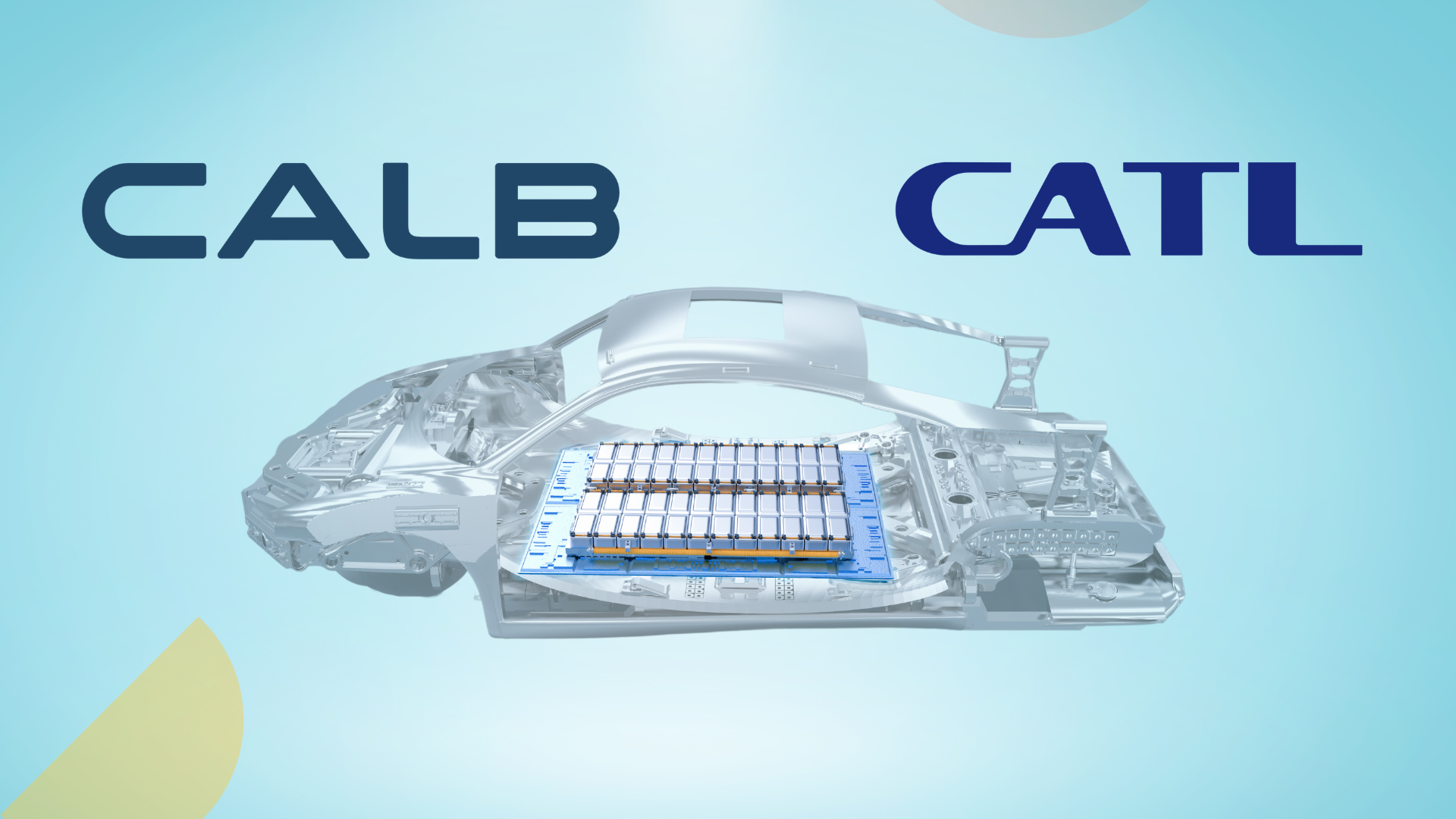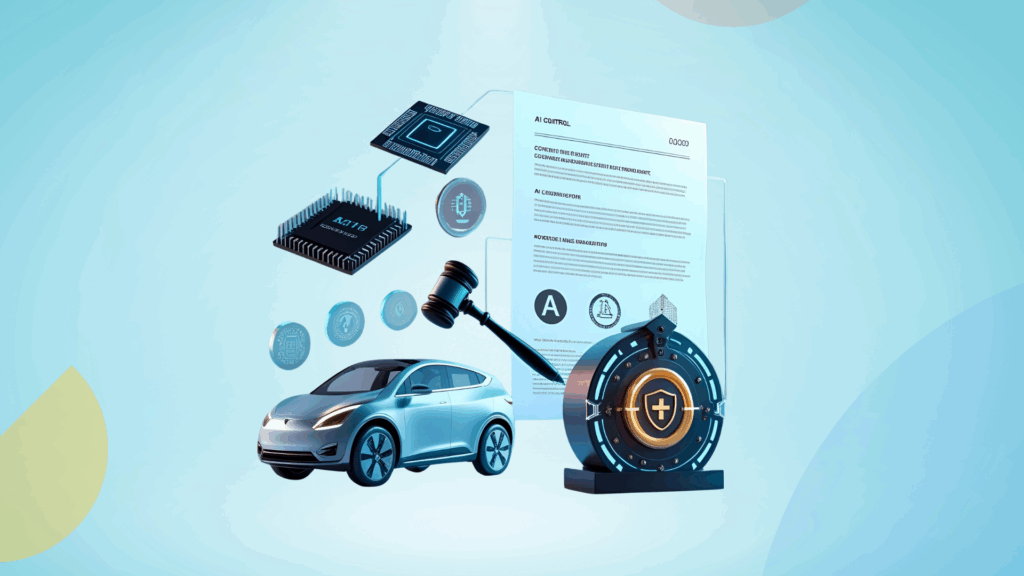The rapid growth of China’s electric vehicle (EV) market is driving intense competition and increased patent litigation. The patent feud of CALB vs CATL highlights how charged the industry innovation is.
GreyB analyzed patents asserted in the recent EV battery litigations, focusing on the technologies central to these disputes. Combining the analysis of these patents with the patent filing trends our experts spotted a few key areas of innovation where companies are strategically investing in R&D.
Current most critical challenge for EV industry are faster charging, sustainable materials, lightweight designs, and energy-dense batteries with effective thermal management.
This report provides the knowledge necessary for strategic product launches that align with changing market needs while minimizing litigation risks.
The patent battlefield in EV ft. CALB vs. CATL, the world’s largest battery maker
In October 2024, China Aviation Lithium Battery (CALB) initiated legal action against Contemporary Amperex Technology Co. Limited (CATL), alleging infringement on four EV battery-related patents. CALB sought compensation exceeding 1 billion RMB, approximately $138M US.
Here are the patents involved in multiple litigations between these two battery makers:
| Patents in Dispute | GreyB’s Tech Tagging |
| CN114400412B (CALB) | Structural Integrity |
| CN114709533B (CALB) | Structural Integrity |
| CN208256773U (CALB) | Thermal Management |
| CN218788443U (CALB) | Structural Integrity, Thermal Management |
| CN206059484U (CATL) | Vibrational Stability, Thermal Insulation |
| CN114976401B (CATL) | Design Aspect of Battery Cap |
| CN207038571U (CATL) | Design Aspect of Battery Cap |
| CN110010851B (CATL) | Electrokinematics |
| CN108258180B (CATL) | Explosion protection, Design aspect of the battery cap |
| CN203103376U (CATL) | Electric Core protection, Thermal Management |
| CN205231128U (CATL) | Explosion protection, Design aspect of battery cap |
| CN108878892B (CATL) | Electrokinematics |
An analysis of the subject patents highlighted the main areas of innovation under dispute:
- Thermal Management: Advanced systems to manage heat generation, ensuring safety and efficiency.
- Electrokinematics: To facilitate faster charging with better cycle stability.
- Structural Strength: Enhanced designs to maintain durability and integrity under varying conditions.
- Vibration Resistance: Improved stability and resistance to external shocks.
- Assembly Efficiency: Streamlined designs for easier integration and customization across vehicle models.
- Safety Enhancements: Solutions to mitigate risks such as overheating and internal short-circuiting.
As patent disputes like these intensify, battery companies must proactively monitor emerging litigation threats, regularly conduct Freedom-to-Operate (FTO) analyses, and address potential infringement risks.
GreyB’s IP experts simplify this process by offering tailored litigation threat monitoring and comprehensive FTO analysis to keep your innovation protected. In a recent case GreyB helped a leading EV company proactively identify risks, uncover strategic licensing opportunities, and navigate the rapidly evolving EV market.
The importance of thermal management in EV battery litigation
A deeper analysis of the active litigations and counterlitigations between the two battery giants reveals how important thermal management innovations are for the EV industry.
CALB’s disputes with CATL
1. Dispute on a 3-Dimensional battery heat dissipation structure
China Innovation Aviation Technology Group (Parent company of CALB) sued CATL for using its patented technology in battery thermal management. The patent relates to liquid-cooling plates used in thermal management systems. This system was designed to solve the heat-generation problem of lithium-ion batteries during charging and discharging, thereby improving performance.
2. Dispute over the heat exchanging plate design

In another lawsuit, China Innovation Aviation Technology Group again sued CATL for infringing its patented solution for a battery pack temperature control system. The patent describes a battery pack with a partition plate and adhesive connections. This design has multiple advantages, such as improved structural strength, thermal management, and vibration resistance.
Note that the implementation of advanced thermal management relies on both the cooling system and the structural design of the battery pack. If either of these is deemed infringing, it will impact the viability of the whole pack. Therefore, it is crucial to consider both cooling systems and structural design when building robust thermal management systems for batteries.
CATL’s disputes with CALB
1. Dispute over a heat insulation design using a dividing plate
CATL has also aggressively filed lawsuits, accusing CALB of infringing its patented vibration resilience and heat insulation system. The design uses a dividing plate between two adjacent batteries for structural support. The plate also includes an energy-absorbing and heat-insulating portion, helping maintain battery position and improving structural stability, energy absorption, and heat insulation.
2. Invention for Cell Protection, Energy Density, and Thermal Safety:
In an earlier lawsuit, CATL used its patented technology to file litigation against CALB. The patent focuses on an electric core designed to discharge high-temperature gas (that may be generated due to any short circuit). The key advantages include adequate protection of the electric core, increased energy density, and possible thermal protection.
These disputes show that both cooling systems and the battery’s structural design play essential roles in managing heat effectively. If either part—the cooling technology or the battery structure—faces patent infringement issues, it could disrupt the whole battery system’s performance and safety. Companies must focus equally on cooling solutions and structural designs when analyzing their patents’ strength against competitors’ patent portfolios.
Will the other Key Players in Thermal Management Innovations face the same fate?
After CATL, BYD, LG Energy Solution (LGES), and SVOLT Energy Technology are the major players in the thermal control domain in batteries. While BYD is a well-known name, the other two companies (primarily battery manufacturers) recently strengthened their battery thermal management portfolio. Interestingly, these two have been among the top five patent filers related to battery thermal management since 2020.

How are LGES and SVOLT minimizing IP risks in battery innovation?
1. Protecting Global IP Through Collaboration and Strategic Patent Filings
Both LGES and SVOLT have collaborated with ADI and IBEM. These companies focus more on semiconductors and circuitry for battery control and management.
LG Energy Solutions partnered with Analog Devices, Inc. to enhance EV battery management with advanced temperature measurement and impedance technology, which improves performance. Similarly, SVOLT Energy has collaborated with IBEN Energy to build advanced battery control and management systems.
These collaborations allow LGES and SVOLT to access proven, protected technologies. This reduces their risk of unintentionally infringing on existing patents while enabling their teams to focus R&D efforts on critical areas like advanced thermal management.
2. Building a Robust Patent Portfolio:
Digging further into LG Energy Solution’s portfolio reveals that it protects its IP worldwide instead of restricting it to a few countries. LG is proactively shielding its technology globally instead of playing defense in just a few markets.

This worldwide approach to patents suggests LG expects the EV battery wars to spread beyond borders.
LGES has documented patent infringements involving around 580 patents in critical markets like the United States, India, and China. These infringements span core technologies, including cylindrical battery manufacturing, high-nickel battery electrolytes, and silicon anode advancements.
“Respecting intellectual property rights is essential for fostering fair competition in the global market. To ensure the advancement of the overall industry and the company, we will protect our intellectual properties and take bold countermeasures on patent infringements,” said David Kim, CEO of LG Energy Solution.
LGES is now planning proactive measures—including issuing infringement warnings, filing lawsuits, and creating a global patent pool to license its technologies.
The Path Ahead: Using Proactive IP to Mitigate Risk in the EV Battery Sector
Innovations that solve the challenges of range, safety, and performance in EVs will ultimately drive mass adoption. As competition intensifies, companies operating in the EV battery space must view intellectual property as more than a legal formality. Leaders must build a strong patent portfolio, conduct rigorous freedom-to-operate analyses, and actively monitor competitor activities. The ongoing CATL vs CALB litigation is a reminder that neglecting these IP considerations leads to costly legal battles and significant market disruption.
Knowing how these key players (CATL, CALB, LG, BYD) are structuring their patent portfolios will help industry leaders avoid litigation and enhance innovation. Building a similar IP portfolio structure is essential to bring new, profitable products into the market.
GreyB’s has over 18 years of experience in portfolio analysis, FTO searches, and litigation threat monitoring. Connect with one of our experts to enter the EV battery industry with a competitive edge.
How Can We Help You?
We support industry-leading IP professionals through complex problems. Describe your challenge, and let us bring clarity and expertise.












